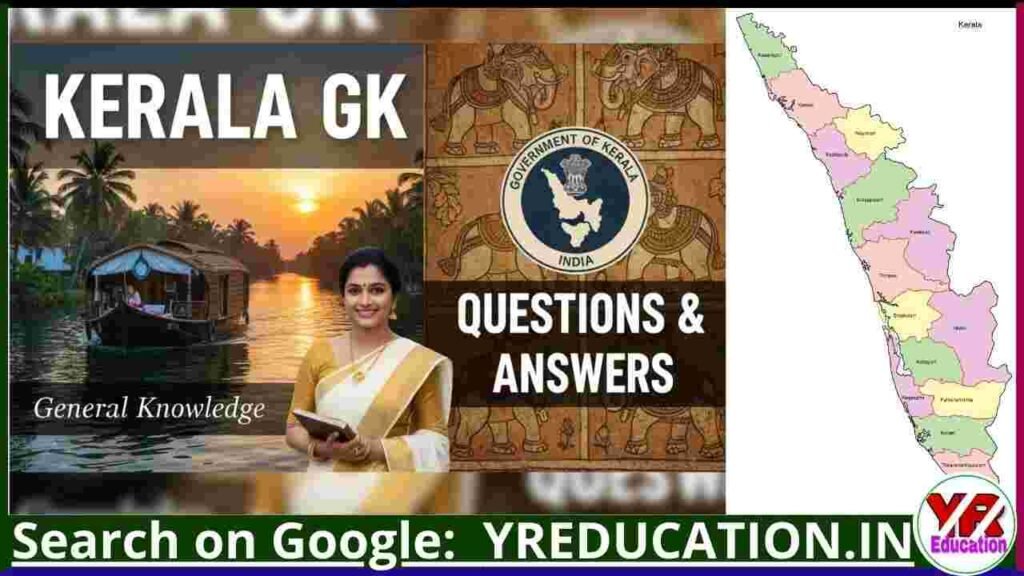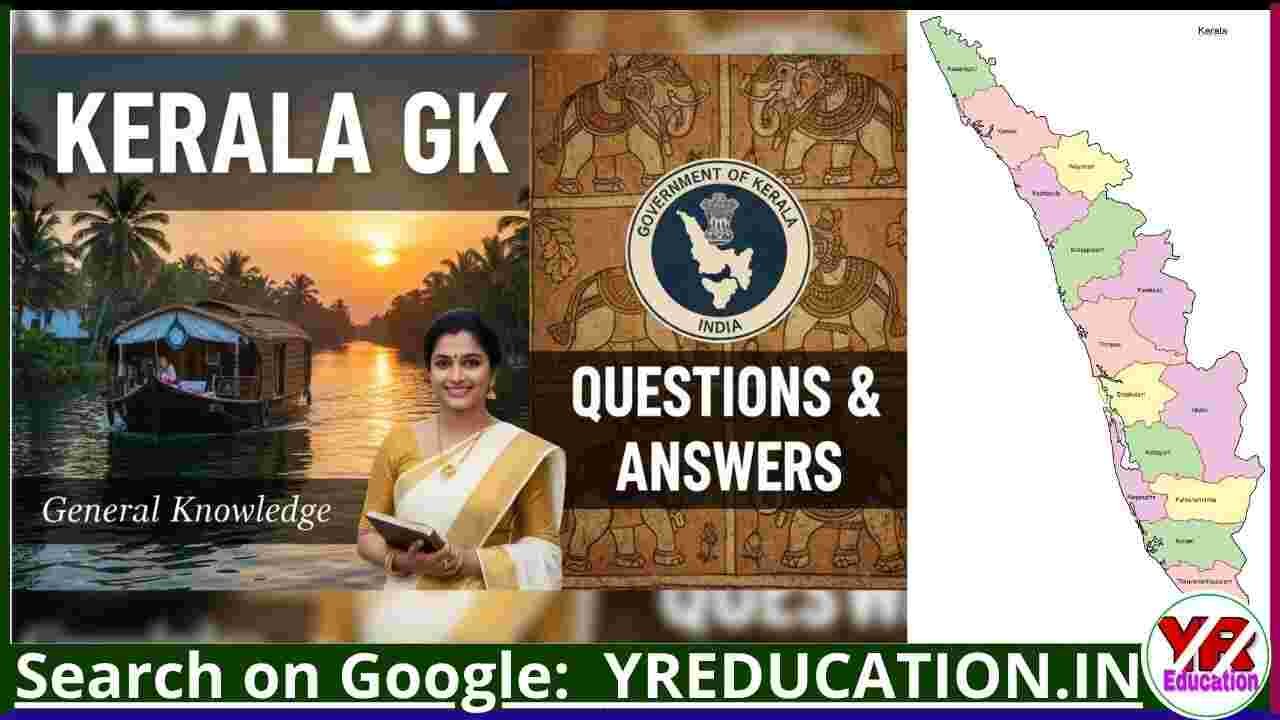1000+ Kerala GK Questions and answers

Know About Kerala State:
Kerala, often referred to as “God’s Own Country,” is an essential topic for all competitive exams due to its unique socio-economic, geographical, and cultural achievements. Administratively, the state was formed on November 1, 1956, with Thiruvananthapuram as its capital and Malayalam as the official language. It is globally recognized for having the highest literacy rate (94.00% as per the 2011 Census) and the highest sex ratio (1084 females per 1000 males) in India, highlighting its advanced human development indicators.
Geographically, Kerala lies on the Malabar Coast, flanked by the Arabian Sea in the west and the Western Ghats in the east, giving rise to its distinct regions of highlands, midlands, and backwaters. The state is home to Anamudi, the highest peak in peninsular India, and is fed by 44 rivers, including the longest, Periyar. Major agricultural exports include spices like pepper and cardamom, earning it the moniker “Spice Garden of India,” and it is the largest producer of Rubber in India.
Key Facts & Administration
| Category | Detail |
| Capital | Thiruvananthapuram (Trivandrum) |
| Formation Day | November 1, 1956 (States Reorganisation Act) |
| Area Rank | 21st Largest |
| Population Rank | 13th Largest |
| Official Language | Malayalam |
| Literacy Rate (2011) | 94.00% (Highest in India) |
| Sex Ratio (2011) | 1084 females per 1000 males (Highest in India) |
| Districts | 14 (Largest District: Idukki, Smallest: Alappuzha) |
| Legislative Assembly Seats | 140 |
| Lok Sabha Seats | 20 |
| Rajya Sabha Seats | 9 |
| State Animal | Indian Elephant (Image of Indian Elephant) |
| State Bird | Great Hornbill |
| State Flower | Kanikonna (Golden Shower Tree) |
| State Tree | Coconut Tree |
Historically, Kerala’s coast has been a hub for international trade since ancient times, attracting Arabs, Chinese, and later, European powers like the Portuguese, who first landed with Vasco da Gama at Kappad in 1498. A significant turning point was the Battle of Colachel (1741), where the kingdom of Travancore defeated the Dutch, curtailing their influence.
The state’s modern history is defined by a powerful social reform movement, often termed the Kerala Renaissance. Key figures like Sree Narayana Guru led movements against caste oppression, culminating in landmark events such as the Vaikom Satyagraha (1924-25) and the Temple Entry Proclamation of 1936, which dismantled centuries of social discrimination. The state also holds the distinction of being the first in the world to democratically elect a Communist government in 1957, led by E.M.S. Namboodiripad.
Culturally, Kerala is immensely rich, being the birthplace of classical art forms like Kathakali (a highly stylized dance-drama known for its intricate makeup and mudras) and Mohiniyattam (a graceful classical solo dance). Ritualistic art forms like Theyyam and the ancient martial art of Kalaripayattu also originate here. The most important festival is Onam, a harvest festival celebrated universally, which features the famous Vallam Kali (Snake Boat Race) on the backwaters.
The economy today is predominantly service-oriented, with tourism and the large volume of remittances from the Malayali diaspora in the Gulf countries playing a crucial role. For any exam preparation, memorizing the state’s “firsts” (like the first fully literate state, first state with 100% primary education, etc.) and key geographical locations (dams like Idukki, lakes like Vembanad, and national parks like Silent Valley) is highly recommended.






